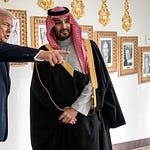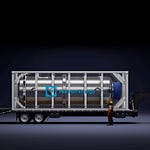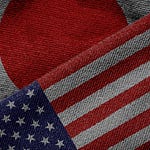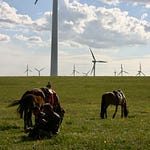This week, we talk about the rise of the global battery industry: its history, key players, raw material struggles, and how China came to dominate it. To do so, I’m joined by
, author of Volt Rush: The Winners and Losers in the Race to Go Green. We trace the story of electrification from Volta’s early experiments to the supply chains that now shape global power. Sanderson brings decades of reporting to a narrative that reveals China’s industrial strategy, the entrepreneurs behind battery giants, and the troubling realities of mining cobalt, nickel, and lithium. Together, we examine how technology, geopolitics, massive wealth, and environmental trade-offs define the future of clean energy.Watch now on YouTube.
We talk about
The 200-year arc of battery development, from telegraphs to Tesla
Why electric cars failed in the early 20th century and internal combustion triumphed
The role of consumer electronics in driving lithium-ion breakthroughs
China’s industrial strategy, subsidy regime, and rise as a battery superpower
Key figures like Robin Zeng and Wang Chuanfu who shaped the battery industry
The cobalt trade in the Democratic Republic of Congo and its corruption scandals
Nickel mining in Indonesia and its ecological toll
Shifting chemistries: lithium iron phosphate (LFP) and sodium-ion batteries
How supply chains and industrial policy reshape global energy politics
The intersection of decarbonization and national security
Deeper Dive
Sanderson reminds us that before the grid, batteries powered the world’s first telegraph networks. Edison’s dream of electric vehicles, initially supported by Henry Ford, came close to reshaping transport a century ago. But internal combustion surged ahead, helped by infrastructure, falling costs, and the invention of the starter motor. Electric vehicles, once poised to dominate, became a footnote until lithium-ion technology gave them new life.
Lithium-ion batteries were developed in the 1980s and commercialized by Sony in the early 1990s, initially to camcorders and laptops. Sanderson explains how Chinese firms entered the scene through consumer electronics, building expertise and scale before shifting to electric vehicles. BYD and CATL leveraged low labor costs, lax regulations, and access to global brands to become leaders. When Beijing rolled out sweeping subsidies, industrial parks, and protectionist policies, these firms were ready. The result is what we’ve called here on Decouple an “electrostate,” a nation whose dominance in batteries rivals OPEC’s in oil.

Sanderson’s reporting captures the personalities behind this industrial rise. Robin Zeng, the founder and chairperson of CATL dubbed “China’s battery king,” worked tirelessly to perfect a Bell Labs patent and turned CATL into a global powerhouse. BYD’s Wang Chuanfu took a gamble on building cars when investors told him not to. Sanderson argues these characters matter as much as state planning; ambition and risk-taking were as crucial to China’s battery ascendancy as subsidies.
But innovation carries a heavy price. In the Democratic Republic of Congo, cobalt wealth has fueled corruption and violence. Sanderson details the story of Dan Gertler, an Israeli businessman accused of exploiting his ties to Joseph Kabila, Congo’s strongman president, to secure lucrative mining deals later sold to Glencore. Cobalt and copper mines are guarded by multinationals, while artisanal miners risk their lives for a fraction of the profit. In Indonesia, nickel extraction strips rainforests and pollutes seas, challenging the idea of a “green” supply chain.
“The DRC is incredibly resource-rich, yet its history shows how little its people benefit.” – Henry Sanderson

Technology may ease some pressure. The shift to LFP batteries has reduced dependence on cobalt and nickel, allowing Chinese carmakers to sell affordable EVs. Sodium-ion batteries promise even cheaper storage, though they face scaling challenges. Sanderson warns, however, that the bottleneck lies in refining and processing rather than raw materials. Mines take a decade to build, and China’s dominance in processing gives it leverage over the West. National security concerns now drive investment in domestic supply chains, as the Ukraine war highlighted the military value of drones, batteries, and rare earths. Sanderson calls for reframing clean energy: not as a partisan cause, but as strategic infrastructure essential for industrial resilience.
Support Decouple
If you enjoy our work, consider pledging on Substack or making a tax-deductible donation through our fiscal sponsor. Thanks!
This post was created in part with the help of modern AI tools.












